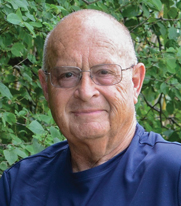
Ethanol’s Path to Acceptance is in Focus, Will Regulators See It?
Technology is leading bureaucratic politics again, especially as the use of ethanol becomes technologically viable. Brazil is clearing the way to greenlight ethanol-fueled ag power, but in the U.S. regulations remain problems engineers can’t solve.
The old “Better Mousetrap” cliché seems to be playing out in powerplant design and the result could spell good things for the ethanol industry.
Technological history shows when things get too expensive or too complex, someone develops “the better mousetrap” with disruptive design and alternatives to costly, over-regulated, and hard-to-maintain systems -- such as SCR emission-control-equipped diesel engines.
For years designers have been cleaning the exhaust stream of diesel power, the century-old workhorse originally designed by Rudolph Diesel to burn on-farm vegetable oils. As the oil industry quickly provided energy-dense petroleum-diesel with delivery-system infrastructure, Rudolph’s dream of agrarian-produced fuel was shelved for convenience but his design was sound and currently powers much of the world’s construction and transportation equipment. Regulations take their toll, however.
For the last decade some heavy hitters in the OEM diesel market have been eyeing alternative fuels and the “agnostic engine” project by Cummins is an excellent example. By employing common basic engine parts and design from the crankshaft to the top of the block, the company has developed heads, valve and injector timing, and induction systems to accommodate various lower-carbon fuels such as propane, natural gas, hydrogen and alcohols.
The latest Cummins engine is a direct competitor to its same-size Cummins cousin, the much heralded medium duty 6.7 in-line 6 powerplant found in light trucks and smaller construction and agricultural applications. The new Cummins B6.7 Octane is an Otto cycle (4-stroke, spark- ignited) engine capable of running on 87-Octane gasoline (and inferentially E-10-15 if Cummins engineers and the marketing staff agree). Lest you think the turbocharged B6.7 Octane is a wimp, Cummins rates the engine at 300 hp.and 660 lb.-ft. torque at 1,400-2,400 rpm. That comes with the bonus of no DEF requirement, no active regen cycle or maintenance, and claims of 10% better fuel economy over competitive gasoline-powered engines (depending on duty- cycle, according to disclaimers).
Enter Ethanol
In Brazil, Case IH recently concluded field tests with the first 100% ethanol-powered sugarcane harvester in its bid to decarbonize the agricultural machinery market. One must remember Brazil ethanol has an advanced distribution infrastructure supporting the country’s massive sugarcane distillation industry, and even most personal transportation vehicles in the nation are powered with cane-ethanol.
“Case IH has been investing for years in alternative propellants, and we have seen ethanol is the best solution, especially for Brazil, and for several factors: it is a fuel produced by our customers and widely used in the country, and it does not require new investments in infrastructure and logistics by producers," says Christian Gonzalez, Case IH vice president for Latin America.
Studies show, when the complete life cycle of fuels is analyzed, ethanol provides a reduction of up to 90% in greenhouse gas emissions compared to fossil fuels, and in Brazil’s case it can reduce operating costs considering transportation and logistics of diesel-fuel use while reducing uncertainties of global petroleum product pricing.
Developed by FPT Industrial (Fiat Powertrain Technologies) the engine is a Cursor 13 Otto- cycle machine which Gonzalez says performed far above results with other versions and technologies tried in the past.
“Already in this first test, the two-row Austof 9000 Series harvester had excellent performance, managing to work at similar levels of productivity and efficiency as the diesel version, even in high-productivity sugarcane,” he explains.
Further tests are planned to tweak the engine to its maximum potential as Case IH begins development of other classes of engines and products, he says.
North American Potential?
Will corn ethanol use for agriculture finally approach Rudolf Diesel’s dream of farm-product feedstocks for farm equipment power in the U.S.? Ask regulators in Sacramento and Washington, D.C. While you’re at it, ask groups that consistently stand in the way of pipelines in Iowa that would improve the efficiency of moving ethanol to markets. And in the meantime, ask Stellantis how long it might wait to offer the B6.7 Octane as an option in the Ram pickup.

